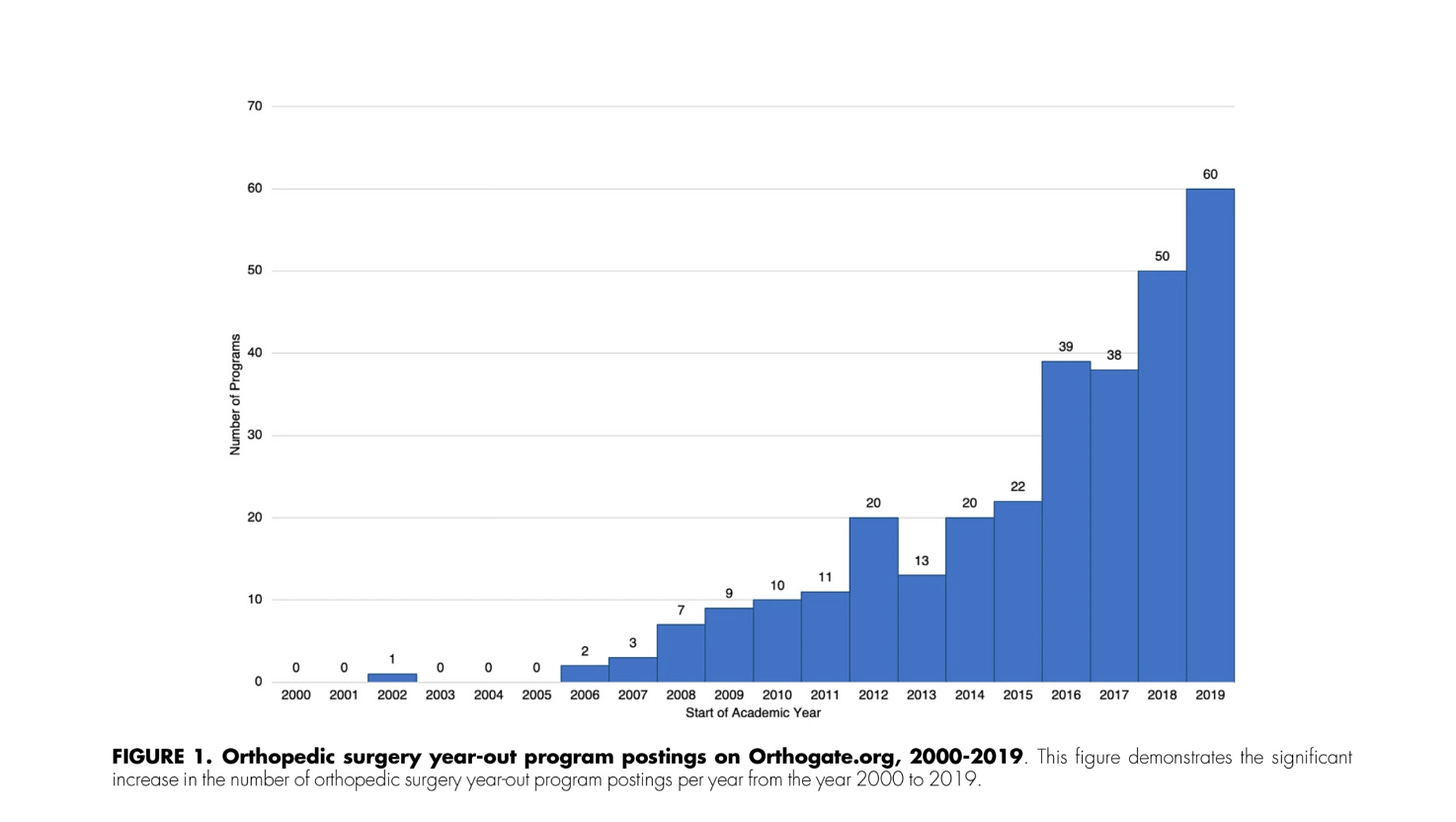The unspoken $18k+ "tax" of pursuing dermatology
Unpaid research fellowships are becoming a trend among prospective derm applicants. They are exploitative, unproductive, and are elitist in a specialty already plagued by lack of diversity
About a month ago, one of our faculty members shared this “opportunity” to our class for a gap year research fellowship at another university for students interested in pursuing dermatology. I edited out any relevant identifiers.
I had some thoughts about this.
It is well known that dermatology is one of, if not the most competitive specialty to pursue coming out of medical school. The high earning potential, desirable hours with little/no call, and relatively low-risk patients make it an easy choice for many. With the limited numbers of residency seats and an increasing number of hopefuls, the rat race continues to grow more intense every year.
Recent trends in medical and residency admissions have revealed that research publications are being favored as a major proxy to judge an applicant’s competitiveness. The most recent Charting Outcomes report found that the average applicant who successfully matched dermatology produced nearly 28 research products (conference abstracts, publications, oral presentations etc). This is absolutely staggering when compared to specialties like internal medicine (8.7), general surgery (10.9), or family medicine (4.2). Compare these values to the same table from 2009, where the vast majority of successful dermatology match applicants had 7.2 research products overall. The average internal medicine PGY-1 today has done more research than the average dermatology PGY-1 merely 13 years ago.
To put this further into perspective, this means that the average successful dermatology applicant today who goes straight through to residency put together nearly 10 research products each year of medical school (residency applications go out at the beginning of 4th year). This is in addition to topping their class on their clerkships and board exams.
Well how did this happen? And is this a bad thing?
I answer both questions in another post where I discuss the rise of a “med student research industrial complex” and how this does not benefit anyone and arguably makes both the literature and diversity in medicine worse.
The reason I’m writing this post in particular is because this increased emphasis on research has paved the way for another disturbing trend - unpaid research fellowships. Due to the astronomical numbers of research products required to match dermatology, many applicants now take a gap year for opportunities like the one I shared above to pump their numbers up. The available data has suggested that anywhere from 10-30% of applicants take a research gap year, and that their match rates are significantly higher than those who did not.
Let’s do a little math here. Nearly all of these fellowship positions are unpaid. The one I shared above is located in a large US city. Considering a monthly expense rate of $1500 (rent + all other expenses), the cost of this fellowship amounts to $18,000 for the year. This is a pretty low estimate - in most large US cities, $1500 a month means living in a shoebox and eating ramen and rice every day. Keep in mind that the person entering this fellowship is likely hundreds of thousands in debt from student loans already. Also keep in mind that this person is likely age 26-30 and may have a spouse, children, or other family that may depend on them. And finally, keep in mind that they have spent their life until now earning one of the most difficult degrees possible.
It is impossible for me to see this position as “opportunity.” What I see is rather free labor for an institution to do largely menial research work - work that these mentors would likely not want to do themselves. And what purpose does this serve? There is no evidence that these fellowships improve clinical skills or promote interest in research careers.
Don’t get me wrong - I do not wish to criticize this specific mentor/institution - I am certain that they are passionate about dermatology, understand that this is the “game,” and wish to help their mentee be as successful as possible in matching. What I am critical of is the immense price tag that comes along with it.
We have to ask ourselves - what type of applicant does this system benefit? Primarily those who come from privileged backgrounds who can afford to take time off and fund an opportunity like this. What does a system like this say to the first-generation underrepresented doctor who bagged groceries to put themselves through college and is anxious to pay back their large medical school loans?
Dermatology is already one of the least diverse specialties in medicine - only 3% of dermatologists are black and only 4.2% are hispanic. I struggle to believe that the emergence of this research gap year trend will improve that.
To make matters worse, applicants to other hyper-competitive specialties such as neurosurgery and plastic surgery are starting to take research gap years as well, making an already arduous 6-7 year training process even longer. Take a look at the following figure from this study that examines this phenomenon in the field of orthopaedic surgery, where the number of so called “year-out” programs has skyrocketed over the past two decades.
The only solution is to stop fixating on research numbers and increase the number of residency spots. Like most other specialties, dermatology faces a nationwide shortage, but only about 530 dermatologists graduate residency every year. People should not have to fight tooth and nail to be one of these precious few, and they certainly shouldn’t have to pay an $18,000 tax for it.





